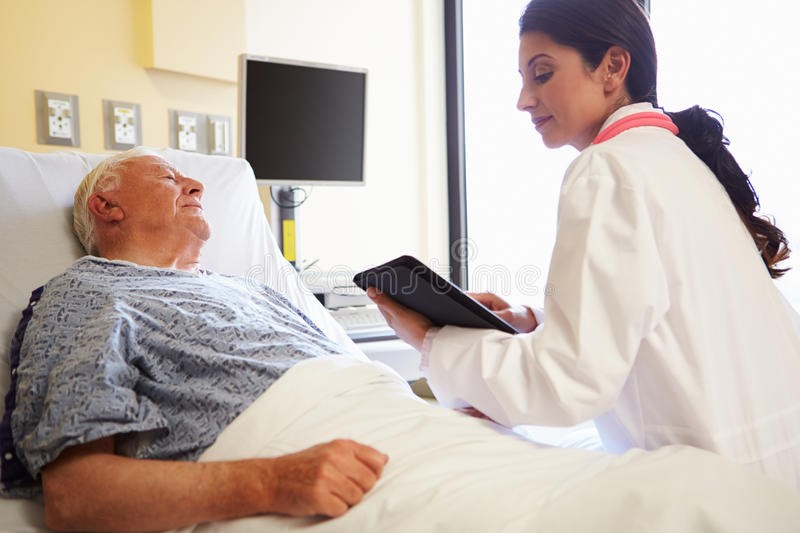
Objective examination: how is inspection done and what is it for?
In the objective examination performed in general medicine, the inspection phase is one of the four methods of patient observation typical of semeiotics
This observation requires the use of the naked eye but sometimes a magnifying glass with an attached fluorescent lamp may help and may include other senses, such as smell.
All this information may prompt the reader to seek medical attention from a general practitioner, dermatologist or paediatrician, never to self-diagnosis and even less to self-therapy.
In order to confirm any sign indicative of disease (which may be a simple distinguishing feature of the healthy person), there are medical procedures that guide the experienced physician (in fact, the medical student in the early years self-diagnoses himself a series of more or less inauspicious diagnoses) towards the prescription of analyses, instrumental examinations, and ultimately medical therapies and surgical interventions.
During the inspection, the examiner observes and notes:
External signs:
- Body characteristics and general symmetry. Body type: asthenic, athletic, pycnic, normo-conformed;
- nutritional status, weight, signs of hypovitaminosis of any kind;
- skin colour: search for any forms of jaundice, dyschromia (discolouration as in pityriasis) confirmation of possible jaundice by observation of the colour of the sclera (white part of the eyeball)
- frequency and amplitude of breathing during respiration;
- observation of any abnormalities such as “barrel chest” in emphysema, “hollow chest”;
- movements of the abdomen and each side of the chest during breathing
- observation of abnormalities such as “batrachian abdomen”, scarring along the linea alba, or from appendectomy or caesarean section
- hair coat distribution such as hypertrichosis in women, etc;
- divarication of the rectus abdominis muscles
- characteristics of the umbilicus: site, shape, possible eversion, colour, possible infiltration
- gait: e.g. claudication intermittens may be a sign of peripheral vasculopathy.
Direction of the examination
In usual medical practice, one starts with the head and continues on the neck, trunk and arms, legs, and ends with the feet.
Mostly, some particular signs of very frequent pathologies are looked for.
All observations are transcribed at the end.
Head inspection
The head examination should include the palate, tongue, uvula, tonsils, eyelids, sclerae and eyeballs.
The overall appearance and facial expression (facies) is observed.
One looks for asymmetries, obvious swellings, often of the salivary glands.
Asymmetries in the masticatory muscles may be normal or pathological.
A turreted head is typical of thalassaemia major.
An arched palate may be a sign of Marfan syndrome.
An enlarged and protruding tongue can be seen in amyloidosis.
A bifid uvula is seen in Loeys-Dietz syndrome.
Orange-yellow tonsils in Tangier’s disease.
Eyes and contour
Eyes: one looks for exophthalmos (a symptom of hyperthyroidism), or deviations of the eyes (e.g. outwards is a symptom of abducens nerve palsy.
One looks for yellowish spots or papules, i.e. xanthelasmas around the eyes (a sign of hypercholesterolaemia).
Peri-orbital swellings can occur in myxoedema related to hyperthyroidism, but also in other diseases.
The presence of purplish patches with telangiectasia on the malar eminences is called ‘mitral facies’ and is associated with mitral stenosis and pulmonary hypertension
Mouth inspection
Any deviations of the oral rhyme may be due to facial nerve palsy
Speech impairment: spontaneous speech disturbances, which if not due to alterations of the tongue, palate or facial muscles form part of the neurological examination.
Inconsistencies of speech may be related to a state of confusion which, if not due to external causes (alcohol, drugs), requires an immediate visit to the emergency room to rule out a stroke.
Neck
Thyroid gland tumour (may be related to goitre or other pathology).
Arms
Investigate for possible muscle hypertrophy or atrophy.
Observe for possible lymphoedema.
Sinus inspection
Symmetry in shape and size and any deviations and coarse masses.
Retraction of “orange peel” skin may be a symptom of mammary gland tumour
Observe the nipple for changes such as introflexion or discharge and Paget’s disease of the nipple.
Inspection of the abdomen
Observation of any asymmetry, scarring, abnormal arrangement of masses.
Swelling in the abdomen may be an indication of ascites, which may be an indication of heart failure or other gastro-enteric disorders, such as hepatitis and other serious diseases.
Back
It is one of the preferred sites for injuries caused by sun radiation: sunburn, moles, but also the dreaded melanoma.
Bedsores, which are dangerous because they can become infected, are common in bedridden people.
Legs
Observation of varicose veins and other collateral circles.
Observation of thrombophlebitis, a possible cause of phlebo-thrombosis.
Observation of alteration of the axis of the lower limbs.
Feet
Drumstick toes, but also declivous oedemas, are signs of heart failure
Detection of reddish discolouration in the extremities of the feet, if associated with sores with pus are one of the symptoms of advanced diabetes mellitus.
Inspection during the physical examination also involves the use of the sense of smell, such as in the case of any typical odour present: acetonaemia, alcohol odour, particular odours in the case of massive tissue necrosis, etc.
Read Also:
Emergency Live Even More…Live: Download The New Free App Of Your Newspaper For IOS And Android
Objective Examination: What Is Percussion And Why Is It Done?
Auscultation In The Objective Examination: What Is It And What Is It For?
Palpation In The Objective Examination: What Is It And What Is It For?
Heart Disease: What Is Cardiomyopathy?
Inflammations Of The Heart: Myocarditis, Infective Endocarditis And Pericarditis
Heart Murmurs: What It Is And When To Be Concerned


